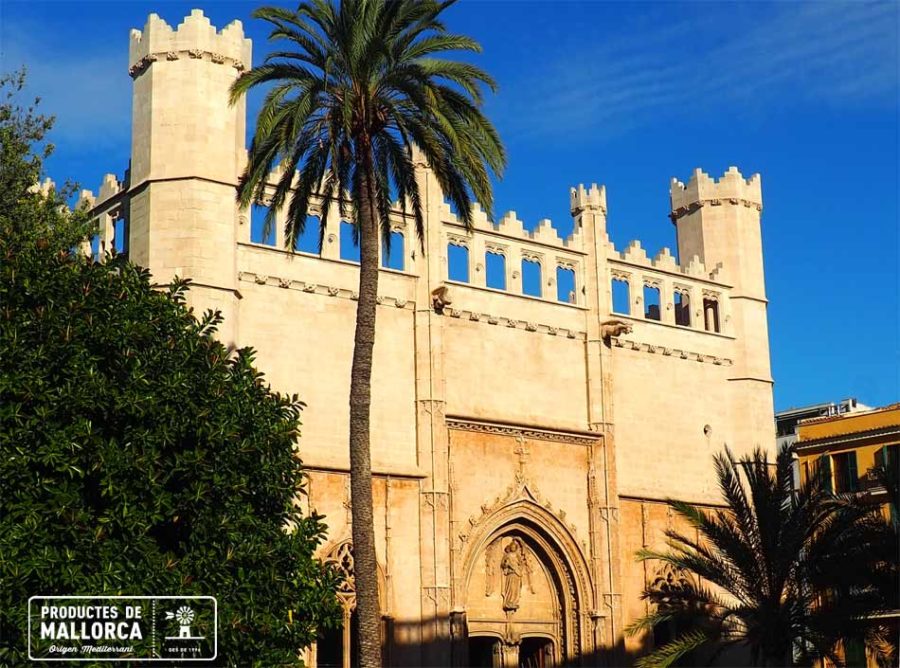
La Lonja de Palma
One of the most spectacular historical buildings in Mallorca is the Lonja de Palma, which together with Bellver Castle and the Cathedral, constitute the architectural jewels of the capital.
La Lonja de Palma, known locally as Sa Llotja, is one of the masterpieces of Gothic architecture in Mallorca. It was created by Guillem Sagrera between 1420 and 1452.
Guillem Sagrera
Guillem Sagrera was born in Felanitx (a village in the southeast of Mallorca), and moved to Palma when he was very young to work with his father as a stonemason. He participated in the construction of the Cathedral of Perpignan, and directed the work on the Cathedral of Palma, as well as being responsible for the construction of the Castelnuovo castle in Naples, commissioned by the King of Aragon, Alfonso V the Magnanimous.
Location of La Lonja de Palma
Before King Jaume I conquered Mallorca in 1229, the city (Madina Mayurqa) was already protected against possible attacks by an Islamic wall, dating from the 11th century. Several gates communicated the walled enclosure with the outside. One of them is still preserved and is known as “sa Porta de sa Gabella de la Sal”. This door has a very peculiar characteristic, since its exterior side is a Muslim ogival arch, while inside it is a medieval semicircular arch. This “Porta de sa Gabella” was the one that communicated the city with the shipyards, which were left outside.
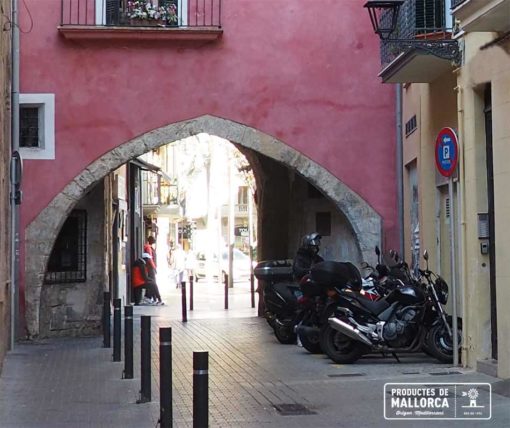
All that space between the Islamic wall and the outside by the sea, known as the “Ribera del Mar” was quickly occupied after the conquest of 1229. That place would be destined to the shipyards, and would be the center of trade and shipping activity.
Around 1300 a new, larger wall was built, reaching out to the sea, to protect the entire new site from the shipyards.
Natural disaster
In 1403 a catastrophic flooding of Sa Riera, a torrent that passed near the aforementioned gate, swept away the entire area of the shipyards that had been enclosed by the new wall.
This natural disaster destroyed buildings and lives and left a large open space that would be used to rebuild the area. At that time, the merchants, constituted as a College, thought of building the Fish Market as their headquarters. The place was privileged, in front of the sea and protected by the Renaissance wall. To direct the works they hired Guillem Sagrera as an architect, who at that time was already in charge of the works of the Cathedral of Palma.
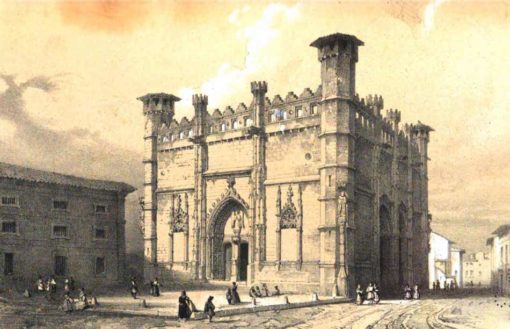
View from the side of the wall facing the interior of the city. The wall was on the other side.
La Lonja was protected from the sea by the wall until the end of the 19th century, when the wall was largely demolished. Opening and expanding the city was then considered a sign of modernity. It was then in the front line, right by the sea. The full image of the Lonja was reflected, for the first time, in the waters of the bay of Palma (see photo below).
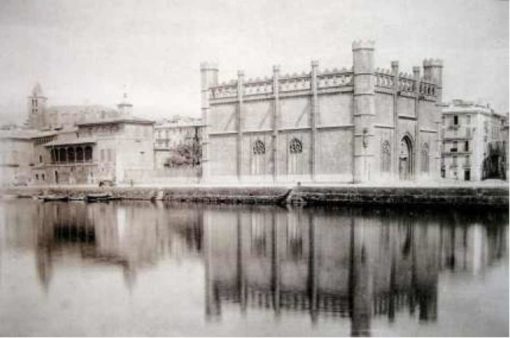
Later, already in the 20th century, land was gained from the sea along the entire seafront of the city for the construction of the Paseo Marítimo. La Lonja was then kept away from the sea shore, but it also allowed its contemplation from firm ground, what is now a beautiful boulevard, the Paseo Sagrera.
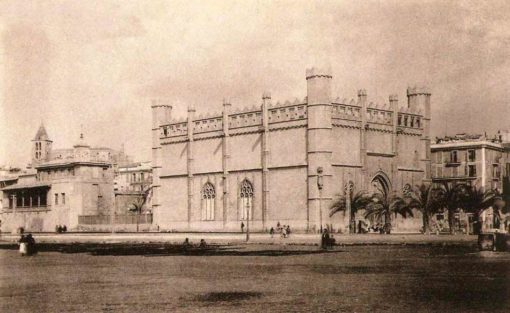
Description of the building
It is a rectangular building constructed in limestone, marés extracted from the quarries of Mallorca. It is made up of three naves of the same height, with a ribbed vault roof supported by six columns or pillars without a base or capital that form the ribs of these vaults in their highest part.
Its interior space is diaphanous, of great beauty and very luminous thanks to its portals and large glass windows.
On the outside, each of the four towers represents a saint: Santa Clara in the corner facing the convent of the same name; San Juan Bautista in which he looks at the church of St. John of Malta; San Nicolás – a sculpture that was stolen around 1885 – in which he was looking at the oratory of St. Nicholas of Porto Pi; and Santa Catalina in which he looks towards the suburb of Palma.
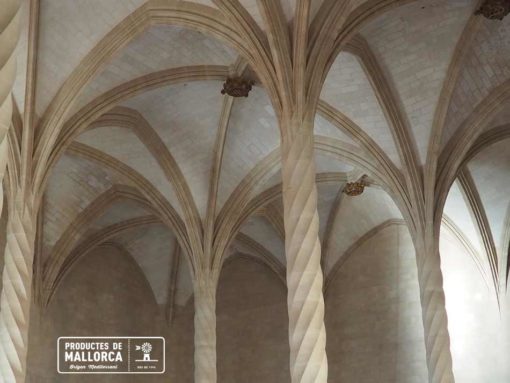
The majesty of the building’s exterior is only surpassed by the spectacular nature of its interior space, which resembles a palm garden.
Before the construction of the Lonja was completed, Guillem Sagrera left Mallorca. He had a dispute with the Colegio de la Mercadería and went to take charge of the construction of the Castelnuovo castle in Naples.
Uses of the Lonja de Palma throughout its history
In the Middle Ages and transition to the Renaissance, the port of Palma was one of the most active in the western Mediterranean. The building started out as a wholesale fish market for merchants and a trading hall for maritime trade.
Due to piracy in the 16th and 17th centuries, commercial activity shifted to the Atlantic. That meant the decline of the Mediterranean, with the port of Palma losing importance and the Lonja being used as a mere grain warehouse. In later times it was also used as a barracks for soldiers.
Already at the beginning of the 19th century, during the War of Independence, cannons were being manufactured for the army at the Lonja.
Much later, in 1931, the Lonja de Palma was declared an Asset of Cultural Interest and was used for artistic and museum exhibitions. It was also the venue for the first sessions of the Balearic Parliament.
Today it is a magnificent building, in an environment privileged by its relaxed and cosmopolitan atmosphere, with a diversity of restaurants and shops. An ideal place to spend an afternoon, visiting one of the exhibitions organized inside, or simply to have a drink on one of the surrounding terraces.
La Lonja is built with marés, a very common material in Mallorca. If you want to know an old trade and how the extraction of this material shaped the coast of Mallorca, follow the link: Building with marés
